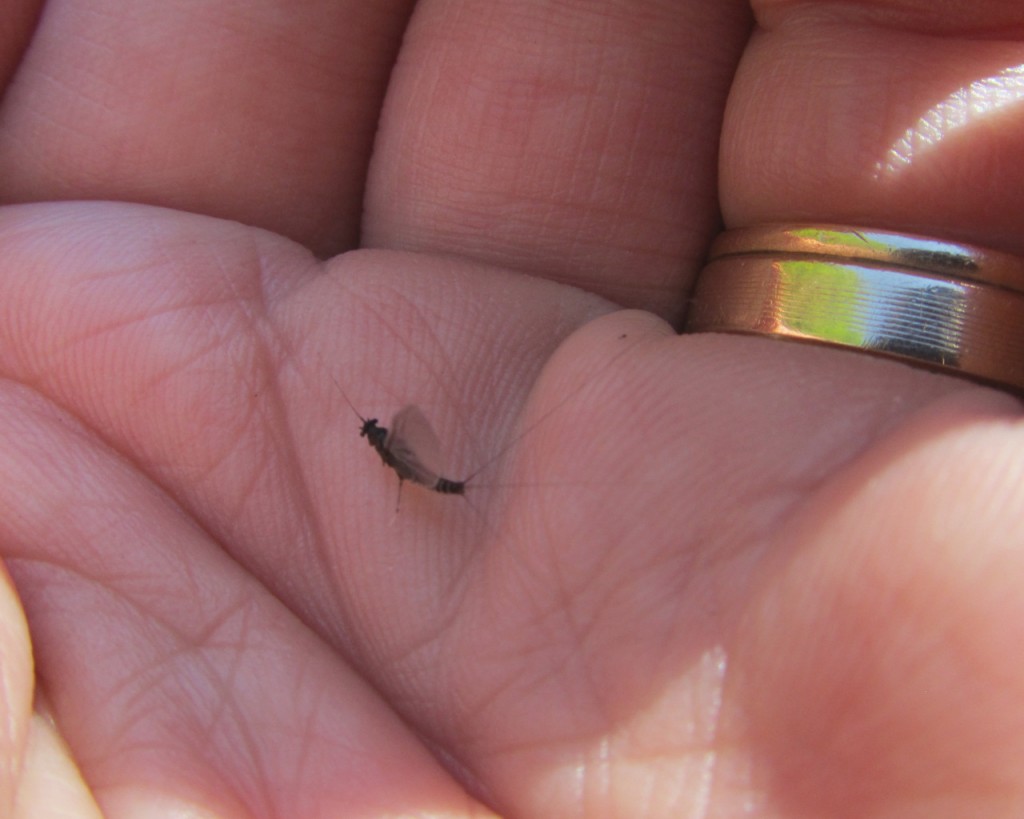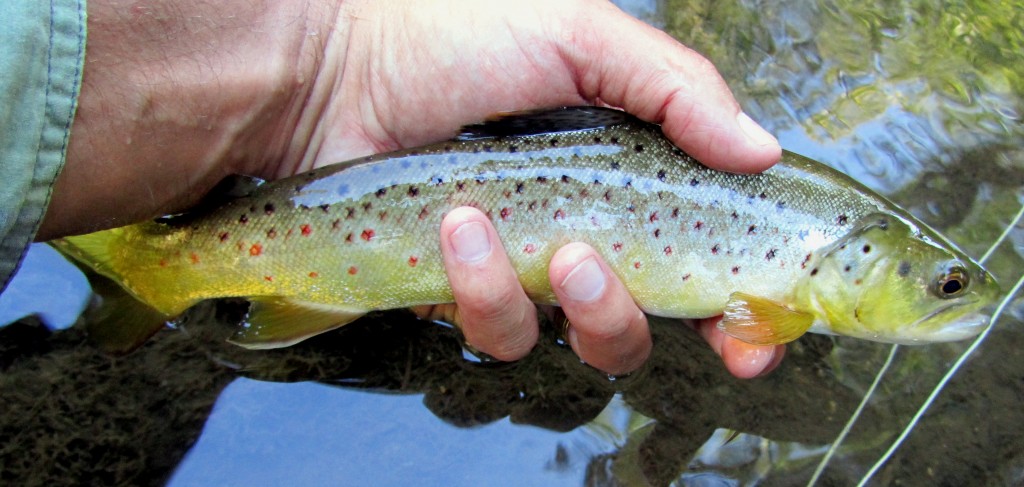It’s always a great feeling when you succeed in matching the hatch: you determine exactly what the fish are feeding on, manage to find a fly that closely resembles it and start catching fish. Often times this is how fly fishing goes. However, there are times when none of the logical patterns seem to work and instead, a fly that represents nothing the fish are currently feeding on seems to work best. It might be an Elk Hair Caddis when there are no caddis on the water, or it might be an attractor pattern. The Patriot is a good example of the latter on many northern Michigan rivers.
I got out again Friday morning before work. There weren’t many bugs early morning, so I started fishing wet flies. When that was unproductive, I moved on to nymphs and later tried streamers. Fishing was slow, with little more than a couple missed hits on the wet flies.
As the sun came up and the temperature began rising, I started seeing a bunch of these:
The water was very clear, but I wasn’t really seeing any rises. Since the sub-surface patterns weren’t doing particularly well for me, I figured I may as well try some Trico dry flies. A couple refusals (from some very small fish) was about all the action I had with these. Despite the hatches, fish simply weren’t feeding on Tricos, at least not on the surface.
I went back to wet flies, again with no real success. Mind you, my supply of wets was less than ideal, with only a couple unweighted patterns tied on standard dry fly hooks. I don’t think I was getting the fly down far enough. I could have added some weight to my line, but I just didn’t have much confidence in these flies.
There was still no surface activity, but I decided to tie on another (larger) dry fly: one of my historically most successful attractor patterns for this river, a Red Humpy. I had only one left and on top of being a pretty bad tie, it was also quite beat up. A few casts in and I caught my first fish of the morning: a tiny brown trout. Shortly after, I caught a couple more small browns.
The first few fish were all 6″ or less, so assuming that my Humpy was only managing to fool the young dumb fish, I switched back to a Trico. I figured, maybe the dry fly action was just now picking up and matching the hatch would get me into some better fish now. Well, it didn’t… the Trico continued to be ineffective.
Before switching back to my Humpy, I tried a few other flies to rule out the possibility of the Humpy not being the reason for my previous luck: a Stimulator, Caddis, BWO and a Partidge and Red. I caught nothing on these flies, but after tying the Humpy back on, I was into more fish almost immediately.
As I waded downstream (further from the access point), the fish began increasing in size. A couple more 6″ fish, then some in the 8-10″ range.
It was getting late and the sun was now high in the sky. I was pretty happy with the outcome of the morning and the fact that I managed to figure things out and land a few decent trout. I started to wade a bit more quickly down river towards the next exit point, still drifting my fly through some of the better looking water. That’s when this good looking brown trout gulped up my Humpy:
I caught this fish midstream in some pretty shallow riffles, full sun and no cover nearby. Needless to say, I was not expecting it! I had 6x tippet on and he got into some pretty fast water, but I managed to get him to the net to wrap up another great trip.
So, why a Red Humpy? I remember my reason for deciding to start tying and fishing it on this river many years ago. My dad’s friend PJ introduced me to the Humpy and I liked how durable the fly was and how well it floated. My theory was that since the Isonychia Bicolor (Slate/Mahogany Dun) is so common on the this river almost all season long, a Humpy tied in red around size 12 might work as a rough imitation. I can’t really say whether this is the key to its success here, but I guess it’s a theory. Or, it might simply come down confidence. Everyone has their favourite go-to fly for a particular river and for me, this is it.



